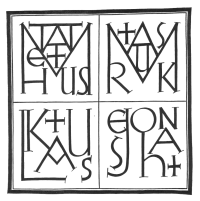
by Felix Just, S.J., Ph.D.

Prologue (1:1-18)
"Signs," beginning with the Wedding at Cana (2:1-12)
Jesus Dialogues with Nicodemus (2:23–3:21)
Jesus and/or his Disciples Baptize People (3:22-26; 4:1-2)
Jesus Encounters the Samaritan Woman at the Well (4:1-42)
Jesus Heals a Sick Man at the Pool of Bethesda (5:1-18)
New Details at the Feeding of the 5000 (6:1b, 3-6, 8-9, 12b, 14-15)
Bread of Life Discourse (6:22-65)
[Woman caught in Adultery (7:53–8:11) - added later]
Jesus Gives Sight to a Man Born Blind (9:1-41)
Jesus Raises Lazarus from the Dead (11:1-44)
Jesus Washes the Disciples' Feet (13:1-20)
"Disciple Whom Jesus Loved" (13:23-25; 19:26-27; 20:2-10; 21:7, 20-24; cf. 18:15-16?)
Last Supper Discourses, incl. "Paraclete" & "Vine and Branches" (13:31–16:33)
Great Prayer of Jesus (17:1-26)
New Details at the Trial before Pilate (18:28–19:16)
New Details at the Crucifixion (19:20-24, 26-28, 30-37, 39)
First Resurrection Appearance to Mary Magdalene alone (20:11-18; cf. Matt 28:9)
Risen Jesus Appears to Thomas (20:24-29)
Risen Jesus Appears again at the Sea of Tiberias/Galilee; Dialogue between Jesus & Peter (21:1-25; cf. Luke 5:1-11)
First and Second Endings to John's Gospel (20:30-31; 21:24-25)
No Infancy Narrative (but see John 1:14 - "the Word became flesh")
No Childhood Episodes (but see 1:12; 13:33; 21:5 - believers are called "children")
No Baptism of Jesus (but see 1:19-34 - John testifies about Jesus)
No Temptation in the Desert (but see 8:44; 13:2, 27 - the role of Satan & the Devil)
No Calls to Repentance (but see 1:29; 5:14; 9:41; 15:22; 20:23 - on sin and forgiveness)
No Sermon on the Mount; no Beatitudes (but see 13:17; 20:29 - Jesus calls believers "blessed")
No Lord's Prayer (but see 17:1-26 - the Great Prayer of Jesus)
No List of "Twelve Apostles" (but see 13:16 - messengers; 1:35-51; 6:67-71; 20:24; 21:2 - disciples; "the Twelve")
No Mission of the Disciples during Jesus' Lifetime (but see 13:20; 14:12; 20:21 - the risen Jesus sends them out)
No Parables (but see 10:6; 15:1-8; 16:25, 29 - a few "paroimia" or "figures of speech")
Few "Kingdom of God" Teachings (only 3:3-5; cf. 1:49; 6:15; 12:13-15; 18:33-39 - Jesus' role as "King of Israel")
Few "Ethical" Teachings (only 13:34-35; 15:12, 17; cf. 14:21-24 - "Love One Another" and "Love Jesus/God")
Few Predictions of Jesus' Return (only 14:3; 21:22-23 - Jesus will "come again" or "come" to believers )
No Exorcisms (but see 7:20; 8:48-52; 10:19-21 - Jesus is accused of having a "demon")
No Transfiguration Story (but see 1:45; 3:14; 5:45-47; 9:28-29 - Jesus is associated with Moses)
No Passion Predictions (but see 5:18; 11:50-53 & 18:14; 12:24-25, 32-33; 18:31-32 - talk of Jesus' death)
No Institution of Eucharist at the Last Supper (but see 6:22-59; 13:1-20 - Bread of Life discourse; Washing of Feet)
No Ascension Narrative (but see 3:13; 6:62; 20:17 - Jesus talks about descending and ascending)
| Synoptics | John |
| Jesus' ministry only lasts about one year | Jesus' ministry spans three Passovers (2:13; 6:4; 11:55) |
| Only one journey to Jerusalem | Multiple visits to Jerusalem (2:13; 5:1; 7:10) |
| John the Baptist is "Elijah"; preaches repentance | John [the baptizer] is not Elijah, but a "witness" to Jesus (1:19-36) |
| Jesus' ministry begins after John the Baptist's arrest | Jesus' ministry overlaps with John's (3:22-30) |
| First four disciples Jesus calls are two pairs of brothers: Simon & Andrew, James & John |
First five disciples: Andrew, an anonymous second one, Simon Peter, Philip, Nathanael (1:35-51) |
| Many "miracles" but few longer speeches | Only a few "signs" but several long monologues and dialogues |
| “Love God”; “Love your neighbors”; “Love your enemies” | “Love one another” (13:34-35; 15:12, 17; focus within cmnty) |
| Peter is the first and most prominent of the “twelve apostles” | Mary Magdalene, Martha of Bethany, and the “Beloved Disciple” are more prominent as “disciples” of Jesus |
| Future Eschatology: “Kingdom of God” is coming | Realized Eschatology: “Eternal Life” now (3:36; 5:24; 6:47-54) |
| Opponents of Jesus include Sadducees, Herodians, etc. | Jesus' opponents usually called "the Jews" or "the world" |
| Opponents plot to destroy/kill Jesus for various reasons | Opponents try to stone Jesus for blasphemy (8:59; 10:31-33; cf. 11:8) |
| Temple incident occurs one week before Jesus' death | Temple incident is at the beginning of Jesus' ministry (2:13-22) |
| Anointing at Bethany by anonymous woman, and objection by anonymous people |
Anointing at Bethany by Lazarus' sister Mary, and objection by Judas Iscariot (12:1-8) |
| Last Supper is the Passover Meal (Thursday eve) |
Last Supper is not the Passover meal itself, but occurs before Passover, which begins Friday eve (13:1; 18:28) |
| “Gethsemane”: Jesus is betrayed through Judas’ kiss | “Garden” in Kidron Valley: Jesus identifies himself for arrest (18:1-11) |
| Jesus is crucified at 9:00 a.m. on the Day of Passover itself, and dies by 3:00 p.m. that afternoon |
Jesus is condemned to death at noon on the Day of Preparation before the Passover; crucifixion & death occur quickly (19:14, 31, 42) |
| Women prepare spices to anoint Jesus' body after his burial | Joseph of Arimathea & Nicodemus anoint his body before burial (19:38-42) |
Why does the Fourth Gospel omit so many stories found in the Synoptic Gospels?
Does the Fourth Evangelist presume that the reader knows the material contained in the Synoptics?
What is the significance of all the new material found only in the Fourth Gospel?
What is the significance of the changes or additions made in the stories found both in John and the Synoptics?
Download a PDF version of this page
Return to the list of Materials on the Four Gospels
Return to the Introductory Materials for the Fourth Gospel
This page was last updated on
June 25, 2021
Copyright © 1999--2012 by Felix Just, S.J.